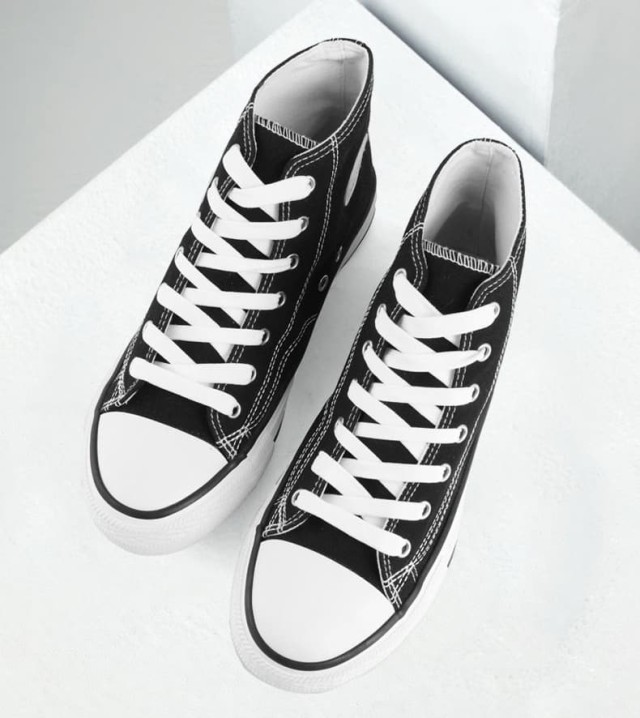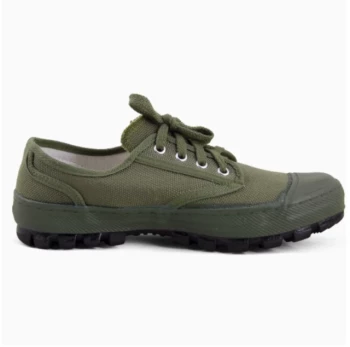Athletes demand footwear that delivers precision, durability, and sport-specific responsiveness. Vulcanized soles—a technology rooted in 19th-century material science—continue to outperform conventional alternatives by mastering the balance of flexibility, traction, and longevity. This article breaks down the engineering behind vulcanized soles and their tailored advantages for skateboarding, basketball, and emerging sports like trail running and indoor climbing.
The Science of Vulcanization
Molecular Bonding and Durability
Vulcanization transforms natural rubber into a high-performance material by introducing sulfur cross-links between polymer chains. This process:
- Enhances elasticity while resisting deformation, critical for dynamic movements.
-
Boosts heat resistance, preventing sole degradation during high-intensity activity.
Research shows vulcanized rubber retains its integrity even under repeated stress, making it ideal for sports requiring rapid direction changes.
Traction Engineering Principles
Tread design and rubber compounds work synergistically in vulcanized soles:
- Hexagonal or circular tread patterns displace water and debris, maintaining grip on wet or uneven surfaces.
- Softer rubber compounds (common in climbing shoes) mold to terrain for friction, while harder blends (used in basketball) prioritize durability.
Sport-Specific Applications
Skateboarding: Flexibility and Board Feel
Vulcanized soles dominate skate footwear due to:
- Thinner profiles that enhance foot-to-board sensitivity for trick execution.
- Controlled flexibility, allowing natural foot articulation without sacrificing support.
Basketball: Impact Absorption and Pivot Efficiency
Modern vulcanized basketball shoes leverage:
- Strategic rubber density zoning—softer compounds at pivot points improve rotational grip, while firmer heel areas stabilize landings.
- Lightweight construction, reducing fatigue during jumps and sprints.
Emerging Uses in Trail Running and Indoor Climbing
- Trail running: Vulcanized outsoles with aggressive treads shed mud efficiently.
- Climbing approach shoes: Sticky rubber compounds and shallow treads maximize rock contact.
Comparative Advantages
Vulcanized vs. Cupsole: Weight and Responsiveness
- Vulcanized soles are typically 20–30% lighter than cupsole counterparts, offering near-instant break-in periods.
- Cupsoles provide more structured arch support but lack the ground feedback preferred in sports like skateboarding.
Heat Resistance in High-Intensity Scenarios
Vulcanized rubber maintains traction even when surface temperatures exceed 150°F (common in outdoor basketball or climbing), whereas some synthetic soles may soften or slip.
Maintenance and Longevity
Preserving Rubber Integrity
- Avoid prolonged UV exposure, which accelerates rubber oxidation.
- Clean treads regularly with a soft brush to remove debris that could degrade grip patterns.
Sport-Specific Wear Patterns
- Skateboarders often wear down the toe and ball areas first; rotating shoes can extend lifespan.
- Basketball players should inspect pivot points for excessive smoothing.
Ready to Elevate Your Footwear Line?
3515 combines cutting-edge vulcanization techniques with sport-specific engineering to deliver high-performance soles for distributors and brands. Whether you need ultra-responsive skate shoes or heat-resistant trail runners, our manufacturing expertise ensures unmatched quality at scale. [Contact 3515] to discuss custom solutions tailored to your athletes’ needs.
Related Products
- Wholesale High-Traction Camo Boots - Custom Manufacturer for Brands
- Durable Rubber-Soled Utility Shoes for Wholesale & Custom Brand Manufacturing
- Durable Canvas Work Shoes with Rubber Lug Sole | Wholesale Manufacturer
- Wholesale Durable Camo Canvas Shoes with High-Traction Rubber Soles
- Durable Rubber Sole Outdoor Shoes Wholesale & Custom Manufacturing
Related Articles
- How Military Camouflage Boots Engineer Tactical Superiority: Design, Protection, and Endurance
- Why Vulcanized Soles Dominate Performance Footwear: Durability Meets Flexibility
- How Vulcanized Rubber Boots Outperform Standard Footwear: Science and Practical Benefits
- How Vulcanized Soles Fall Short—And When to Choose Alternatives
- How Military Camouflage Boots Outperform: Engineering for Extreme Survival



















